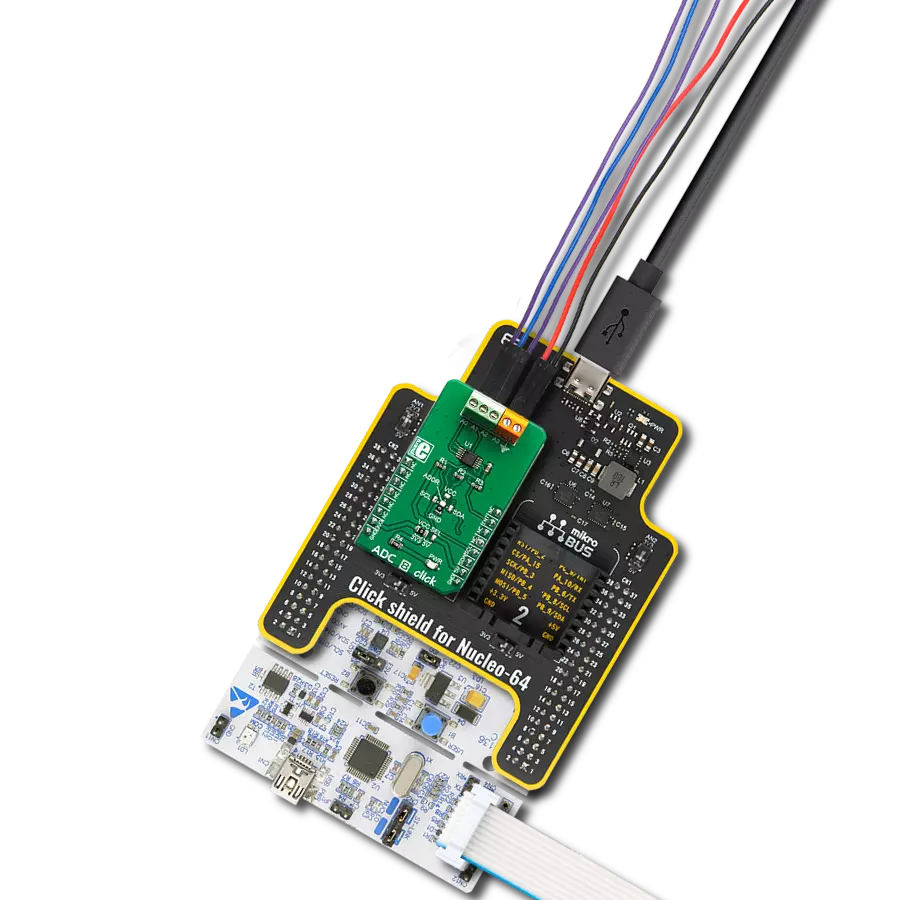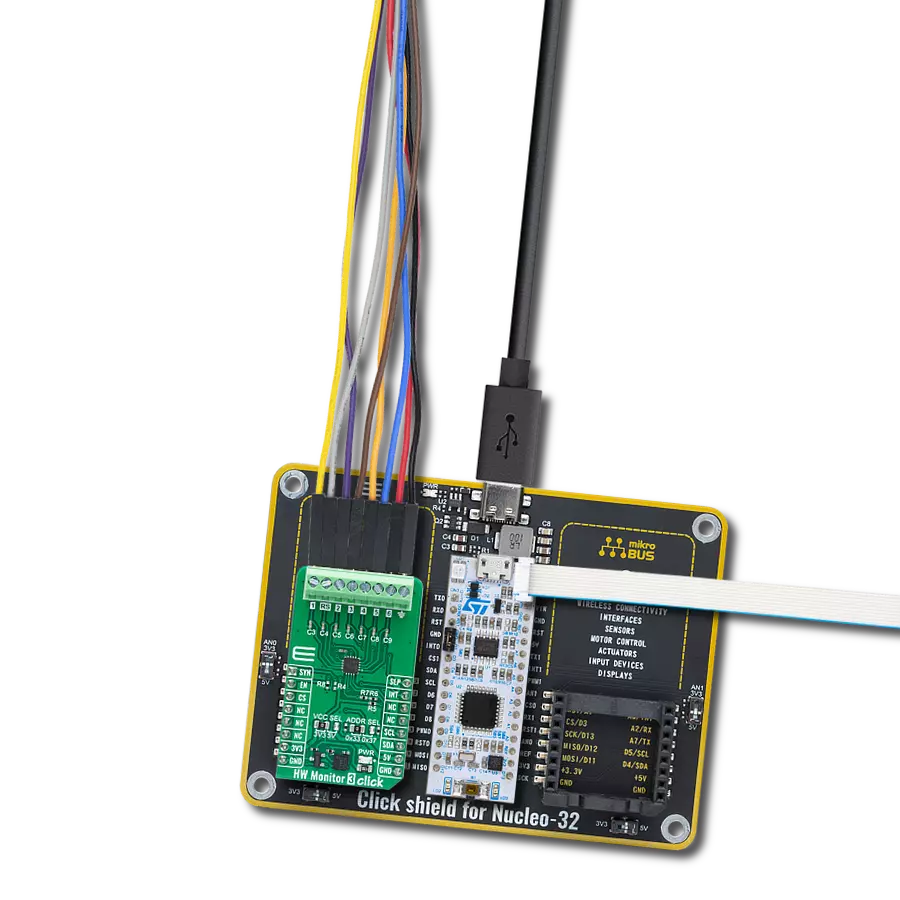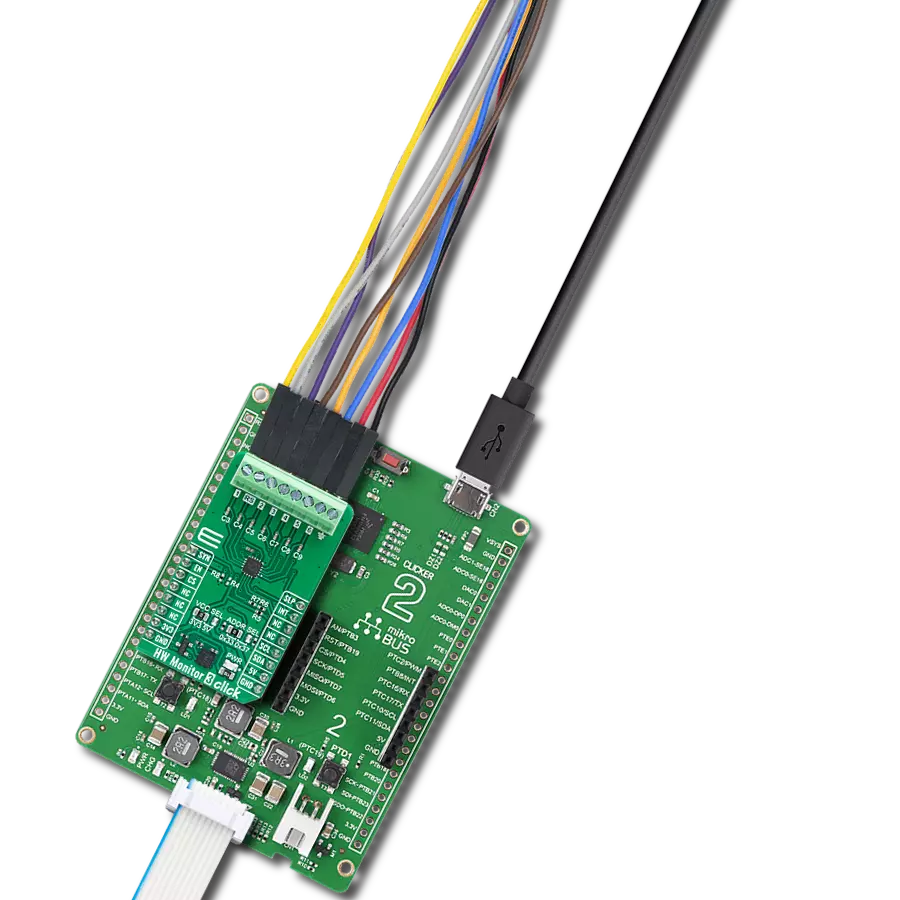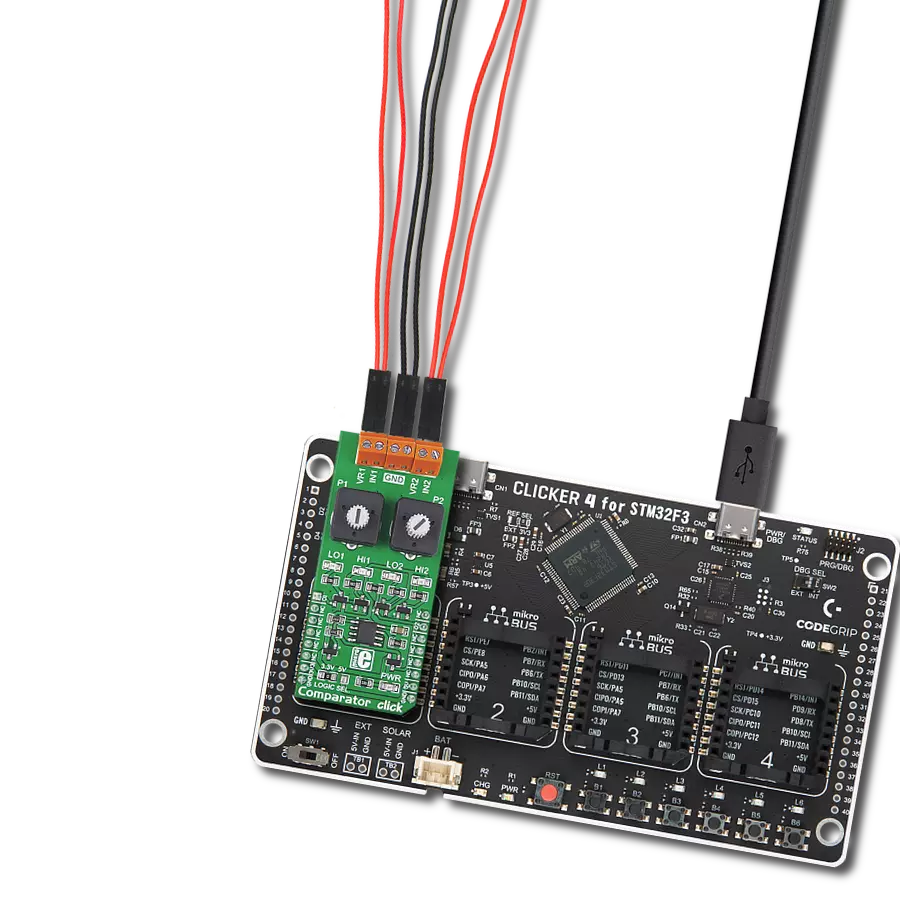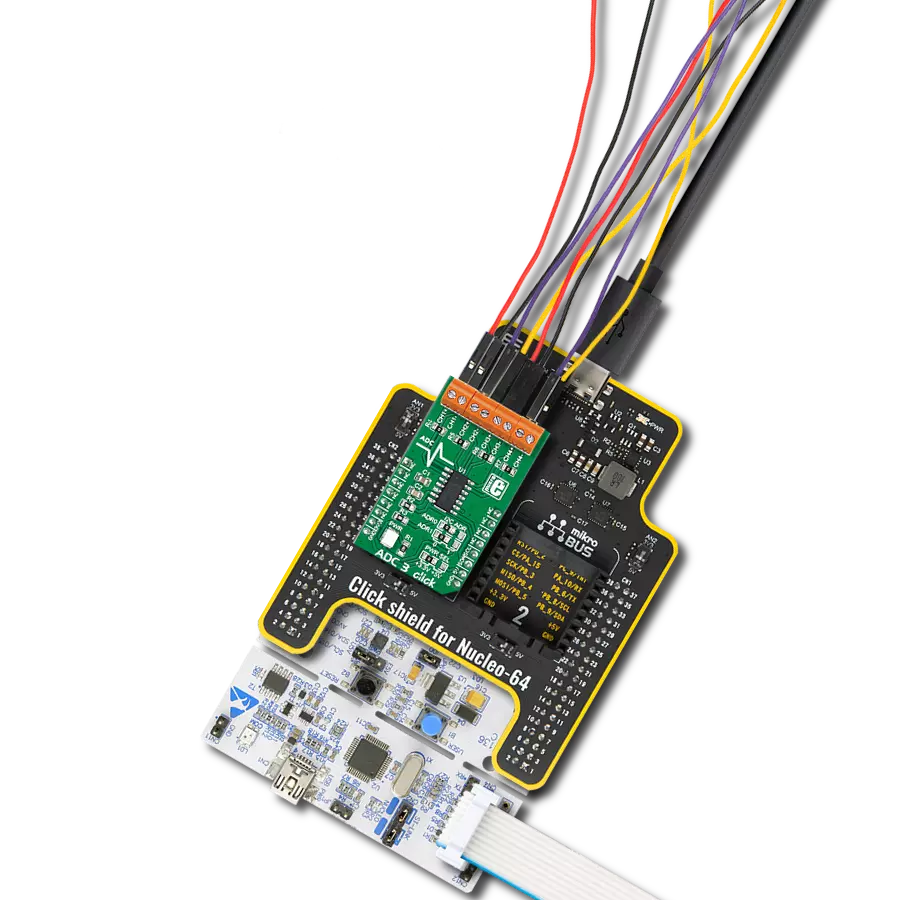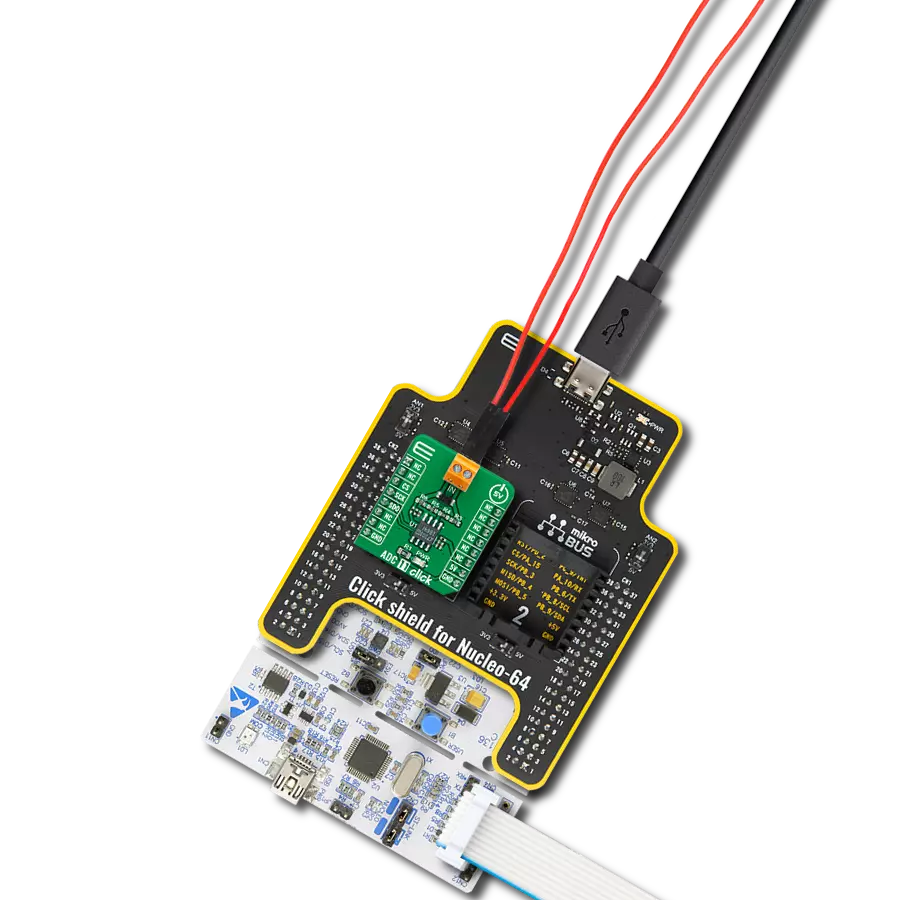Choose our ADC solution for its unmatched speed, accuracy, and reliability
A
A
Hardware Overview
How does it work?
ADC 17 Click is based on the MAX11645, a high-performance two-channel analog-to-digital converter (ADC) from Analog Devices. The MAX11645 uses a successive-approximation conversion technique and fully differential input track/hold (T/H) circuitry to capture and convert an analog signal to a serial 12-bit digital output. It can measure either two single-ended or one differential input(s). The MAX11645 is capable of sample rates up to 94ksps. By taking advantage of the ADC’s high sample rate, multiple channels can be
converted in a short period. This capability allows the device to spend more time in shutdown mode, reducing total power consumption. It also includes a 2.048V internal reference determining its full-scale analog input range. The fully differential analog inputs are software configurable for unipolar or bipolar applications; input signals from 0 to VREF (unipolar) or ±VREF/2 (bipolar) range can be resolved with accurate 12-bit accuracy. ADC 17 Click communicates with MCU using the standard I2C 2-Wire interface to read data
and configure settings, supporting Standard Mode operation with a clock frequency of 100kHz and Fast Mode up to 400kHz. This Click board™ can only be operated with a 3.3V logic voltage level. The board must perform appropriate logic voltage level conversion before using MCUs with different logic levels. However, the Click board™ comes equipped with a library containing functions and an example code that can be used as a reference for further development.
Features overview
Development board
Fusion for STM32 v8 is a development board specially designed for the needs of rapid development of embedded applications. It supports a wide range of microcontrollers, such as different 32-bit ARM® Cortex®-M based MCUs from STMicroelectronics, regardless of their number of pins, and a broad set of unique functions, such as the first-ever embedded debugger/programmer over WiFi. The development board is well organized and designed so that the end-user has all the necessary elements, such as switches, buttons, indicators, connectors, and others, in one place. Thanks to innovative manufacturing technology, Fusion for STM32 v8 provides a fluid and immersive working experience, allowing
access anywhere and under any circumstances at any time. Each part of the Fusion for STM32 v8 development board contains the components necessary for the most efficient operation of the same board. An advanced integrated CODEGRIP programmer/debugger module offers many valuable programming/debugging options, including support for JTAG, SWD, and SWO Trace (Single Wire Output)), and seamless integration with the Mikroe software environment. Besides, it also includes a clean and regulated power supply module for the development board. It can use a wide range of external power sources, including a battery, an external 12V power supply, and a power source via the USB Type-C (USB-C) connector.
Communication options such as USB-UART, USB HOST/DEVICE, CAN (on the MCU card, if supported), and Ethernet is also included. In addition, it also has the well-established mikroBUS™ standard, a standardized socket for the MCU card (SiBRAIN standard), and two display options for the TFT board line of products and character-based LCD. Fusion for STM32 v8 is an integral part of the Mikroe ecosystem for rapid development. Natively supported by Mikroe software tools, it covers many aspects of prototyping and development thanks to a considerable number of different Click boards™ (over a thousand boards), the number of which is growing every day.
Microcontroller Overview
MCU Card / MCU
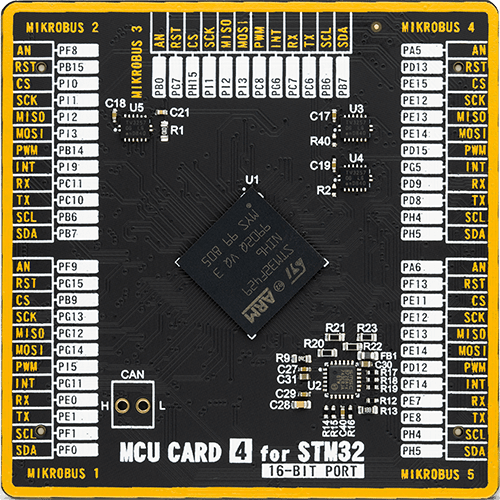
Type
8th Generation
Architecture
ARM Cortex-M4
MCU Memory (KB)
2048
Silicon Vendor
STMicroelectronics
Pin count
216
RAM (Bytes)
262144
Used MCU Pins
mikroBUS™ mapper
Take a closer look
Click board™ Schematic

Step by step
Project assembly
Track your results in real time
Application Output
1. Application Output - In Debug mode, the 'Application Output' window enables real-time data monitoring, offering direct insight into execution results. Ensure proper data display by configuring the environment correctly using the provided tutorial.

2. UART Terminal - Use the UART Terminal to monitor data transmission via a USB to UART converter, allowing direct communication between the Click board™ and your development system. Configure the baud rate and other serial settings according to your project's requirements to ensure proper functionality. For step-by-step setup instructions, refer to the provided tutorial.

3. Plot Output - The Plot feature offers a powerful way to visualize real-time sensor data, enabling trend analysis, debugging, and comparison of multiple data points. To set it up correctly, follow the provided tutorial, which includes a step-by-step example of using the Plot feature to display Click board™ readings. To use the Plot feature in your code, use the function: plot(*insert_graph_name*, variable_name);. This is a general format, and it is up to the user to replace 'insert_graph_name' with the actual graph name and 'variable_name' with the parameter to be displayed.

Software Support
Library Description
This library contains API for ADC 17 Click driver.
Key functions:
adc17_set_channelThis function sets the selected channel active by modifying the config byte.adc17_get_voltageThis function reads the voltage from the previously selected channel by using I2C serial interface.adc17_write_setup_byteThis function writes a setup byte to the ADC chip by using I2C serial interface.
Open Source
Code example
The complete application code and a ready-to-use project are available through the NECTO Studio Package Manager for direct installation in the NECTO Studio. The application code can also be found on the MIKROE GitHub account.
/*!
* @file main.c
* @brief ADC17 Click example
*
* # Description
* This example demonstrates the use of ADC 17 Click board by reading
* the voltage from the two analog input channels.
*
* The demo application is composed of two sections :
*
* ## Application Init
* Initializes the driver and performs the Click default configuration which
* sets the input channels to single-ended unipolar mode.
*
* ## Application Task
* Reads and displays the voltage from the two analog input channels
* on the USB UART approximately every 500ms.
*
* @author Stefan Filipovic
*
*/
#include "board.h"
#include "log.h"
#include "adc17.h"
static adc17_t adc17;
static log_t logger;
void application_init ( void )
{
log_cfg_t log_cfg; /**< Logger config object. */
adc17_cfg_t adc17_cfg; /**< Click config object. */
/**
* Logger initialization.
* Default baud rate: 115200
* Default log level: LOG_LEVEL_DEBUG
* @note If USB_UART_RX and USB_UART_TX
* are defined as HAL_PIN_NC, you will
* need to define them manually for log to work.
* See @b LOG_MAP_USB_UART macro definition for detailed explanation.
*/
LOG_MAP_USB_UART( log_cfg );
log_init( &logger, &log_cfg );
log_info( &logger, " Application Init " );
// Click initialization.
adc17_cfg_setup( &adc17_cfg );
ADC17_MAP_MIKROBUS( adc17_cfg, MIKROBUS_1 );
if ( I2C_MASTER_ERROR == adc17_init( &adc17, &adc17_cfg ) )
{
log_error( &logger, " Communication init." );
for ( ; ; );
}
if ( ADC17_ERROR == adc17_default_cfg ( &adc17 ) )
{
log_error( &logger, " Default configuration." );
for ( ; ; );
}
log_info( &logger, " Application Task " );
}
void application_task ( void )
{
float voltage;
if ( ADC17_OK == adc17_set_channel ( &adc17, ADC17_CHANNEL_0 ) )
{
if ( ADC17_OK == adc17_get_voltage ( &adc17, &voltage ) )
{
log_printf ( &logger, " AIN0 voltage: %.3f V \r\n\n", voltage );
}
}
if ( ADC17_OK == adc17_set_channel ( &adc17, ADC17_CHANNEL_1 ) )
{
if ( ADC17_OK == adc17_get_voltage ( &adc17, &voltage ) )
{
log_printf ( &logger, " AIN1 voltage: %.3f V \r\n\n", voltage );
}
}
Delay_ms ( 500 );
}
int main ( void )
{
/* Do not remove this line or clock might not be set correctly. */
#ifdef PREINIT_SUPPORTED
preinit();
#endif
application_init( );
for ( ; ; )
{
application_task( );
}
return 0;
}
// ------------------------------------------------------------------------ END





















